By Danny Paul van Iersel, 15-04-2024
Why start content modelling
With content modelling we can create a structure of our data. It is used to get a clearer picture of what our content should look like.
This gives us more consistency throughout our project. If your content is using a certain field it is used everywhere. If we change that field, it changes for all related places where the content is shown.
Using our data in a structured way will be more efficient since we do not have to repeat setting titles and make it possible to refer to an item that is being called in different ways.
If we have our content types correctly configured it will be more flexible to be adapted in different ways. If we view the data where we have an image on the right or left would not matter if we are looking at the data. The data contains an image and you are free to move around with that same data in any way you can imagine. Will it be in an email template or on an overview page or full detail page.
As already mentioned, it can be reusable throughout your entire solution. That same data can be used on multiple components on your website, but can also be displayed in your monthly email or even on your mobile app via the headless channel.
Setting up your content model
We do not always start a project at the beginning. Sometimes we have a clean sheet to implement our vision, but other times we need to adapt to what has already been provided.
Content modelling helps us determine and create the content to suit our needs. Defining the structure of your content at a granular level. We will then be able to create our Content Model. The Content Model will define the structure of your content. Their composition including content and metadata elements and relationships.
To do this we must:
- Analyse the requirements
- Identify the structure
- Develop content types
There are 3 key steps in creating the Content Model:
- Creating our Content Types
- A unit with a unique purpose and consistent structure
- Defining the fields
- Containers that hold parts of our content
- Map and use of our content in a channel
- This shows the purpose of our content and how it will be implemented
With Content modelling we need to know how an Editor will author the content and how it will be presented.
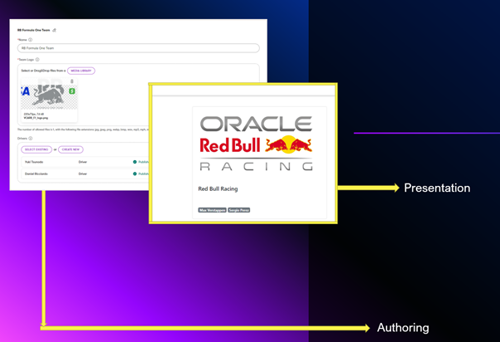
If we have setup our Content Model correctly, we can look forward on how to present the content.
Presenting the data can be implemented in many ways without affecting the content. It only affects the way the content is shown.
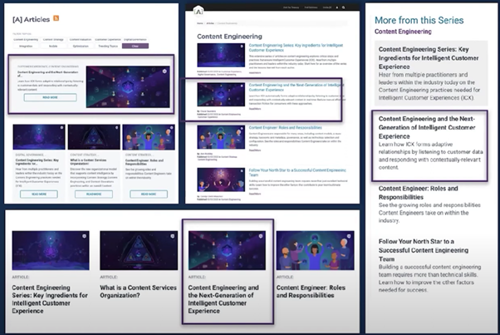
Tools, diagrams and models
There are a vast amount of tools that can be used to setup your models and diagrams. Depending on your normal way of working and current tools for documentation you can choose any way to setup your Content modelling.
Some examples are: Confluence, Figma, Visio or even PowerPoint.
A few examples of a model could be:
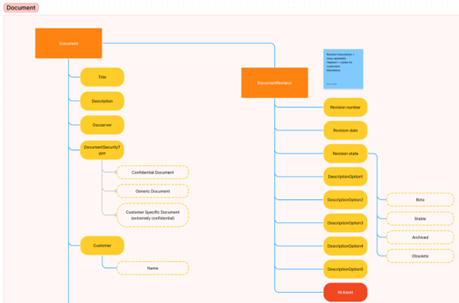
A document system, where a document is related to a Document Revision. It shows the fields both items have and can even give you some idea on how the content is structured.
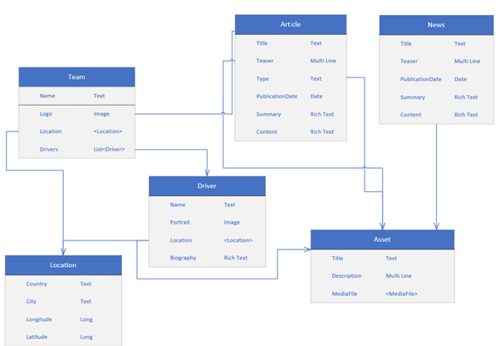
A Content model that gives you the possibility to show Teams, their Drivers and from what Location they are from. Next to that there could be Articles written that are connected to a Team or Driver.
Once you have setup your Content Model of structure, you could have overviews that show you how that content is being used for example on your website.

Above you can see which part of a page contains which information. It also shows where the information comes from and how you can interpret it.
Implementation
The first steps of Content modelling should not be dependent on any implementation. They can be used for any type of CMS system. Once we start the implementation we will look into the specifics of the CMS system we are using.
When looking into Xperience by Kentico it would look a bit like:

Once we have implemented the Content Model we will have a set of environment specific Content Types.
In this case it will result in Pages and Reusable Content Types.
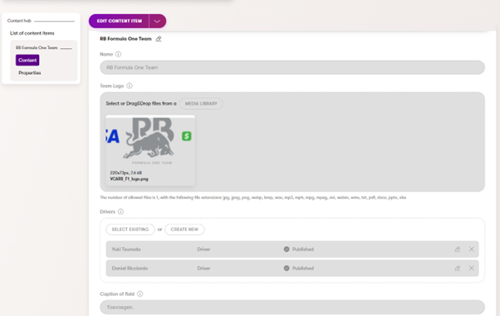
The Reusable Content types can be shared across any Channel. If you have multiple websites, an email campaign or a headless channel that is being used for a mobile app. They all share the same data. If you change your data in the Content Hub it will be changed directly for all your Channels.
Takeaways and Tips
Communication is very important to have the correct setup of your Content Model and to make sure you have everything covered that the client has requested.
Seek approval of your stakeholders. Once you have completed you model make sure you double check this with your stakeholders. This will minimize failures if you directly implement the model while the stakeholders are not aware of do not approve of your model.
Plan ahead and make sure everyone in your project is aware of what you are doing. This will enhance your communication and will give you a better understanding together with your stakeholders.
Keep it simple and do not try to fit everything in one item. As long as it stays logical and understandable it will have more success on implementation. Keep in mind that an end user still needs to be able to work with the data. If it becomes to complex you will not easily get approval of your stakeholders.
Get in Touch
Ready to take your digital experience to the next level? Feel free to contact us to learn more about our services and how we can help you leverage the full potential of your digital marketing.
Tell us about your project
And we'll come up with a tailor-made solution
Get in touch with one of our consultants to find the perfect match that fits your needs and enables you to grow.